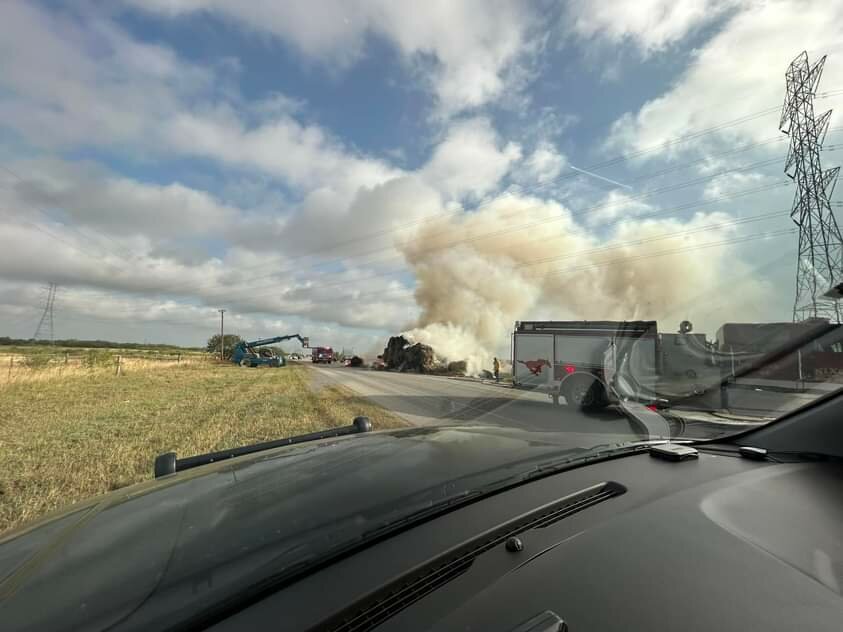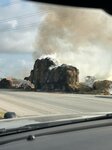Fire danger increases as county drought index rises
Gonzales County emergency officials are warning residents to “try not to burn unless absolutely necessary” as the county’s drought index rises and there is “no foreseeable rain in the immediate future.”
County Emergency Management Director and Fire Marshal Jimmy Harless said county fire departments and state agencies had their hands full battling a brush fire Monday, July 17, near Palmetto State Park.
“Even though Gonzales County is not yet under a burn ban, please treat it like it currently is,” Harless said. “We are dry and will continue to get worse. We have had several grass/brush fires in our surrounding counties
“I’m asking for everyone’s voluntary compliance so we don’t continue to stress our first responders and damage property.”
On Monday afternoon, the Ottine Volunteer Fire Department was dispatched to a brush fire off of County Road 273 with Belmont, Gonzales and Luling fire departments called in to provide mutual aid. The Texas A&M Forest Service was called in to provide two dozers to help dig fire lines as a Blackhawk helicopter attempted to make bucket drops of water to attack the blaze.
Also on scene were the Texas Department of Public Safety, Gonzales County Emergency Management and Texas Department of Emergency Management to assist with incident command, while Gonzales County Emergency Services District No. 1 brought in their rehab trailer to keep firefighters hydrated.
According to incident command, “crews made an aggressive attack from all sides and were able to stop the progression of the fire at approximately 55 acres.
“No structures were lost and we did have one firefighter get transported to Gonzales for heat related injuries,” according to a statement on Facebook. “He is doing well. Crews will be back out on the fire tomorrow (Tuesday, July 18) doing more extensive mop up and ensuring that the fire is completely contained and controlled.
“There are still some smoldering trees and things along County Rd 273 that are well within the burned area and the Gonzales County Sheriff’s Office has been advised and will contact us to assess the situation if needed.”
In Nixon, hay bales on a truck caught fire on U.S. 80 south of the city limits on Monday, causing the roadway to be shut down briefly to divert traffic. U.S. 80 was reopened later Monday and no injuries were reported.
Texas A&M Forest Service (TFS), which monitors wildfire conditions for the state, uses the Keetch-Byram Drought Index (KBDI) for determination of drought conditions within the State of Texas. KBDI was developed by John L. Keetch and George Byram with the US Forest Service Southeastern Research Station to correlate the effects of drought on wildfire potential.
The KBDI is based on a daily water balance, where a drought factor is balanced with precipitation and soil moisture (assumed to have a maximum storage capacity of eight inches) and is expressed in hundredths of an inch of soil moisture depletion.
The KBDI attempts to measure the amount of precipitation necessary to return the soil to full field capacity. It is a closed system ranging from 0 to 800, where 0 represents a saturated soil, and 800 an absolutely dry soil. At any point along the scale, the KBDI value indicates the amount of precipitation it would take to bring the moisture level back to zero, or saturation.
On Tuesday, July 18, Gonzales County had a KBDI average of 555, with a high of 625 near Ottine in the northern portion of the county and a low of 386 on US 183 near the DeWitt County line. This represents an increase of 176 points over the average of 379 reported on Saturday, July 1.
When the KDBI falls between 600-800, this is often associated with more severe drought with increased wildfire occurrence. Intense, deep-burning fires with extreme intensities can be expected. Live fuels can also be expected to burn actively at these levels.
Comments













